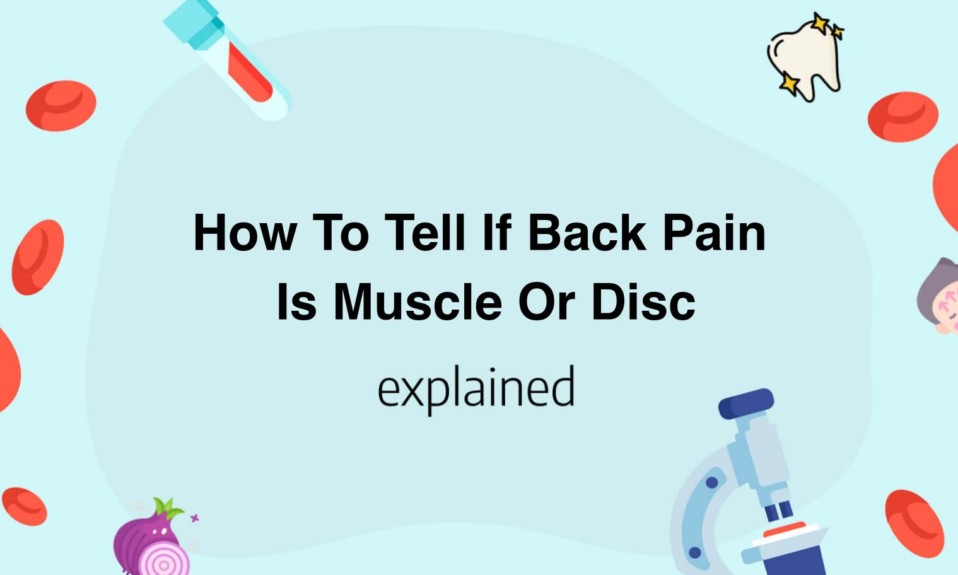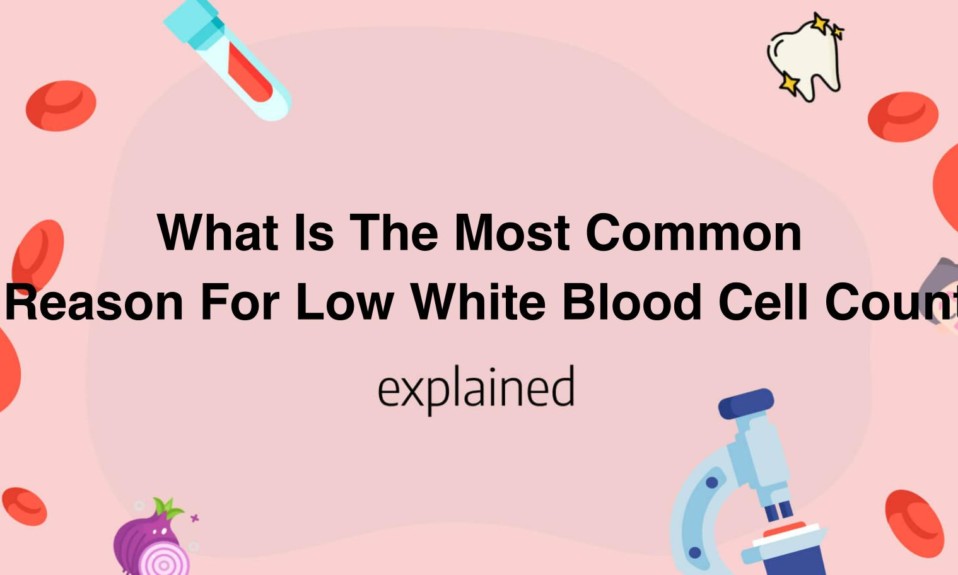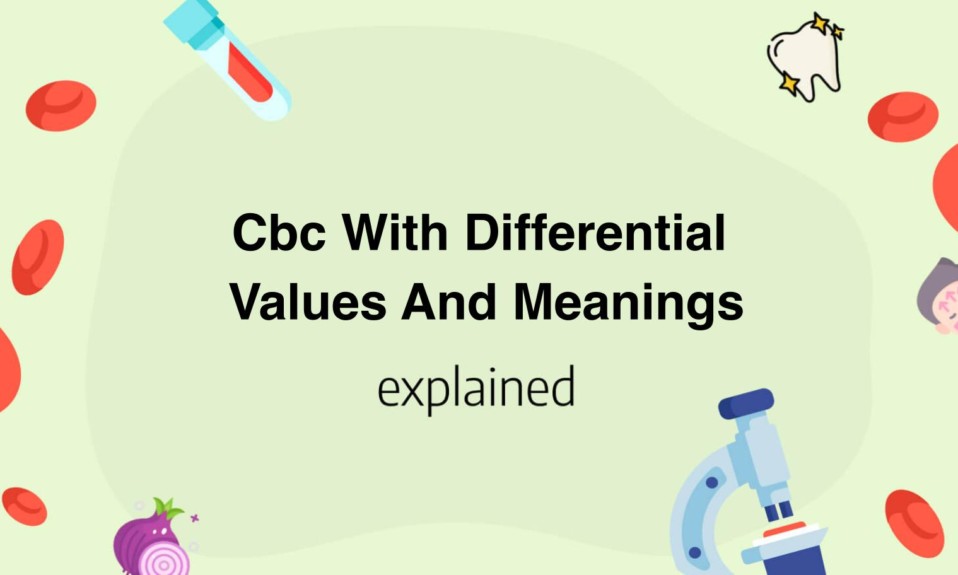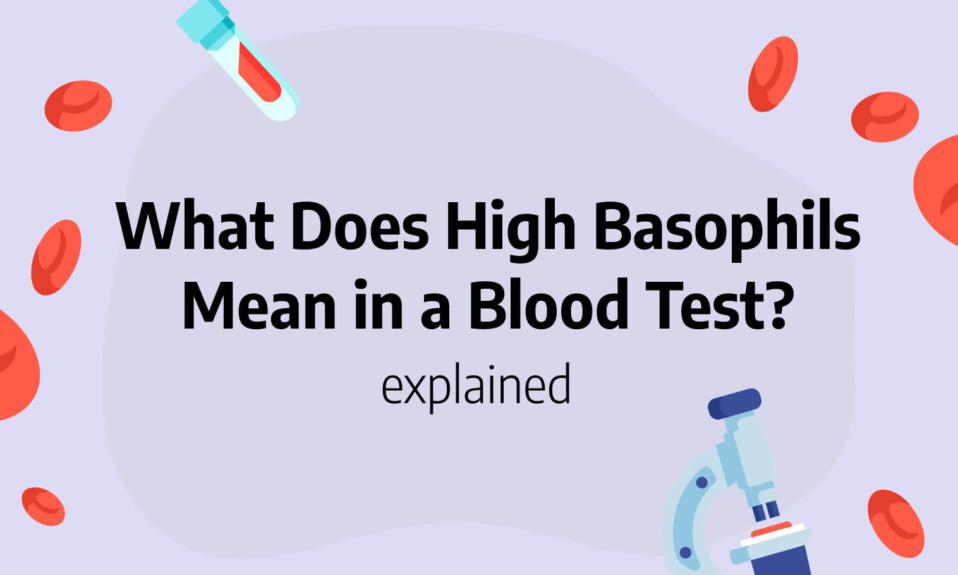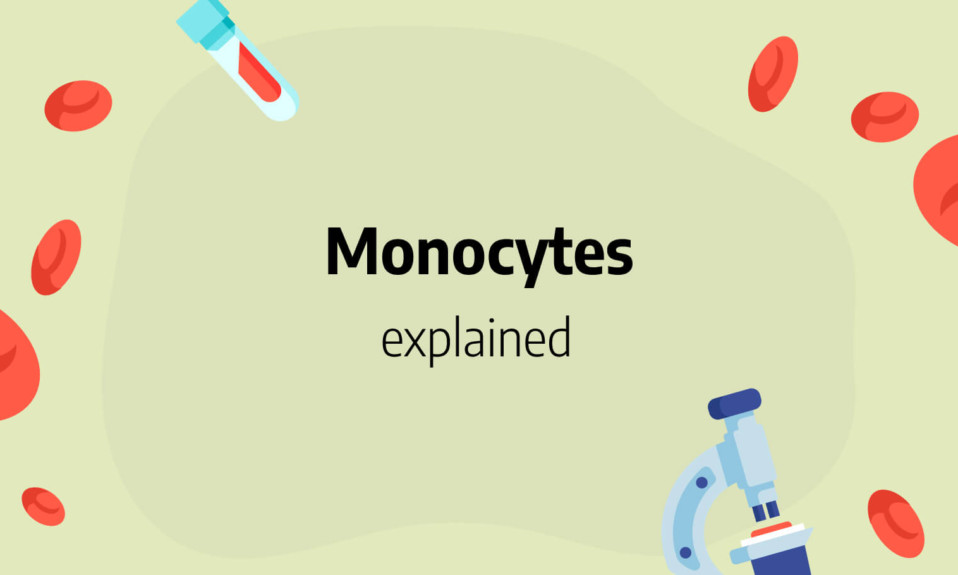Do you have back pain but aren’t sure if it’s a muscle or disc issue? Understanding the cause of your back pain is essential in finding a solution.
Muscle pain is typically caused by overuse or strain, while disc pain is often caused by degeneration or injury.
By identifying the source of your pain, you can take the necessary steps to alleviate discomfort and prevent future injury.
Keep reading for tips on how to tell if your back pain is muscle or disc in nature.
- Pain in the muscle tends to be localized in one area, while disc pain may radiate down the leg.
- Muscle pain gets worse with movement, while disc pain is often worse when sitting still or in certain positions.
- Disc pain may be accompanied by numbness, tingling, or weakness in the affected area of the body.
- Muscle pain often improves with rest, while disc pain may worsen over time without treatment.
- A medical professional can use imaging tests to determine the cause of back pain and develop an appropriate treatment plan.
Muscle or Disc Back Pain: Symptoms Explained
Muscle back pain is a common type of back pain that can be caused by a variety of factors.
It can occur in any part of the back, but the lower back is the most commonly affected area.
The symptoms of muscle back pain include aching or stiffness in the back, especially in the morning or after prolonged sitting or standing.
The pain may also be described as a sharp or shooting sensation, and it may be accompanied by muscle spasms.
Disc back pain, on the other hand, is caused by damage to the intervertebral discs that separate the vertebrae in the spine.
The most common cause of disc back pain is a bulging or herniated disc, which can press on the surrounding nerves and cause pain or numbness in the back, legs, or arms.
The symptoms of disc back pain may include a deep ache in the back, which can be exacerbated by movements such as bending or twisting.
The pain may also spread down into the legs or arms, and there may be a loss of sensation or weakness in these areas.
To differentiate between muscle and disc back pain, it is important to pay attention to the location of the pain and the symptoms that accompany it.
Muscle back pain typically affects the lower back, whereas disc back pain may be felt in the upper or lower back, as well as the legs or arms.
Additionally, muscle back pain is often associated with stiffness and aching, while disc back pain may be accompanied by numbness, tingling, or weakness in the affected area.
In order to manage back pain, it is important to seek the help of a qualified healthcare professional.
Depending on the severity of the pain, treatment options may include physical therapy, medication, or even surgery in some cases.
Preventative measures such as maintaining good posture, exercising regularly, and using proper lifting techniques can also help reduce the risk of back pain.
In conclusion, muscle and disc back pain can cause discomfort and affect daily activities.
It is important to pay attention to the symptoms and seek medical attention if necessary.
By taking preventative measures and seeking appropriate treatment, individuals can manage their symptoms and improve their quality of life.
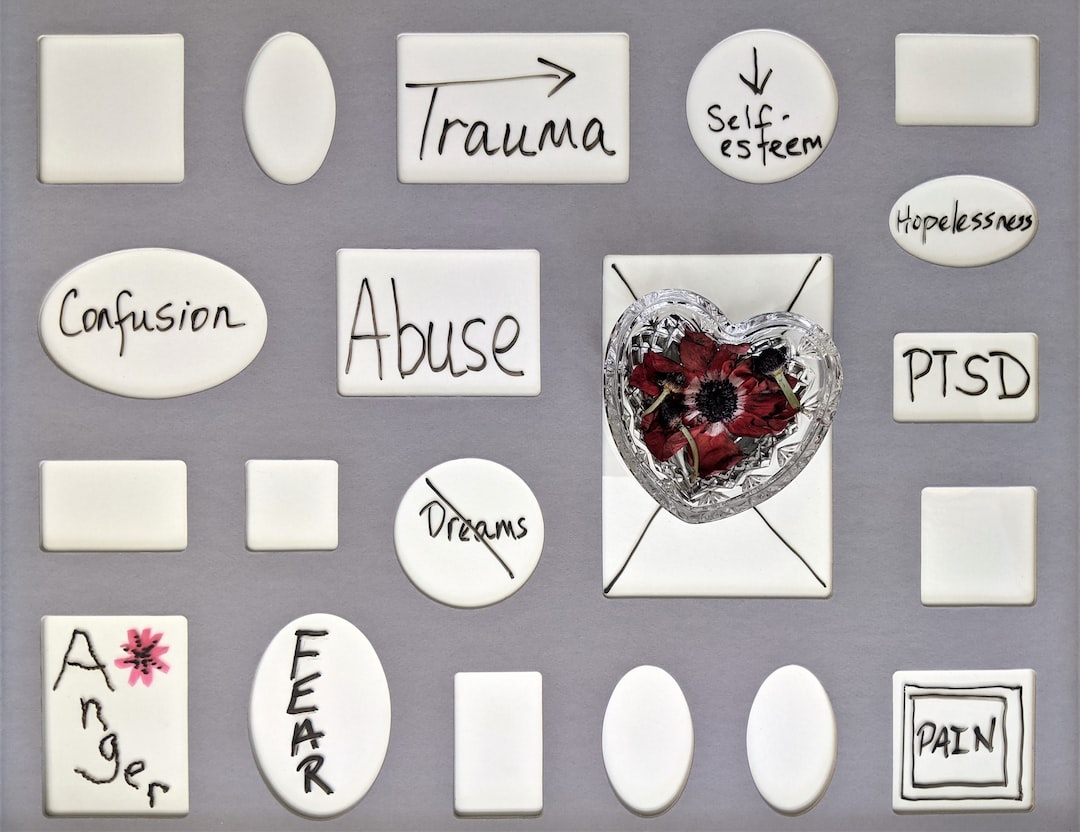
How To Tell If Back Pain Is Muscle Or Disc
First, it’s essential to understand the difference between back pain caused by muscle strains and disc problems.
Muscle strains are often caused by overuse, poor posture, or sudden movement and typically result in localized pain or discomfort in the affected area.
On the other hand, disc issues typically cause pain that radiates outward and can affect other areas of the body, such as the legs or arms.
One way to determine whether the pain is muscle-related or disc-related is by examining the symptoms.
If the pain is concentrated in one area and worsens with movement or activity, it’s likely a muscle strain.
However, if the pain is chronic and affects multiple areas of the body or if movement doesn’t exacerbate the pain, it may be a disc-related issue.
Another way to distinguish between muscle and disc-related pain is through physical exams and imaging tests.
Orthopedic doctors often rely on x-rays, MRIs, and CT scans to identify the root cause of back pain.
For instance, if a herniated disc is causing the pain, imaging tests will reveal the location of the protruding disc and help determine the extent of the damage.
Meanwhile, muscle strains may not show up on imaging tests but can be identified through manual exams that check for tender points or trigger points in the back muscles.
Knowing the root cause of back pain is crucial for effective treatment, as different conditions require different approaches.
Muscle strains can often be alleviated with rest, ice, and anti-inflammatory medication, while disc-related issues may require physical therapy, medication, or in severe cases, surgery.
Additionally, preventative measures such as practicing good posture and engaging in regular exercise can be helpful in preventing back pain altogether, regardless of the underlying cause.
In summary, back pain can occur due to a variety of causes, and determining whether it’s a muscle strain or disc issue is crucial for planning treatment.
Symptoms, physical exams, and imaging tests can all help diagnose the root cause, and preventative measures can go a long way in preventing future issues.
If pain persists or worsens, it’s always best to consult with a physician or orthopedic specialist for proper diagnosis and treatment.
Understanding the Difference Between Muscle and Disc Back Pain
Muscle pain and disc pain are two of the most common types of back pain.
Many people use these terms interchangeably, but there is a distinct difference between the two.
Muscle pain generally occurs due to overuse or injury of the muscles in the back.
This type of pain can be acute or chronic and is usually described as a dull, aching pain that can be felt in one or more areas of the back.
Mild to moderate muscle spasms can also accompany muscle pain.
On the other hand, disc pain stems from the vertebral discs that sit between the bones of the spine.
Discs function as cushions, preventing the bones of the spine from rubbing against each other, but when they become damaged or degenerated, they can cause significant pain.
Disc pain can be debilitating and can be felt in the neck, upper back, or lower back.
This type of pain is usually described as sharp or shooting and is often accompanied by tingling or numbness in the arms or legs.
Disc pain can be caused by trauma or injury to the back, but it can also develop over time due to natural aging and wear and tear on the body.
It is important to distinguish between muscle and disc pain because the treatment approaches for each are different.
For muscle pain, conservative treatment options such as rest, ice, heat, and anti-inflammatory medications are typically effective.
In more severe cases, physical therapy or massage therapy may be recommended to help alleviate pain and improve range of motion.
For disc pain, treatment options are more varied and can depend on the severity and location of the problem.
Mild cases may respond well to rest, ice, and physical therapy, while more severe cases may require injections or surgical intervention.
For example, those with herniated discs may require a surgical procedure to remove a portion of the disc that is pressing on a nerve.
In summary, muscle pain and disc pain are two distinct types of back pain and require different treatment approaches.
Understanding the difference between the two can help individuals better treat and manage their back pain, allowing them to live a more comfortable and pain-free life.
How to Differentiate Muscle Pain from Disc Pain in Your Back
Muscle pain and disc pain are two entirely separate injuries, but they often get mistaken for one another.
It can be challenging to differentiate between them since they can have similar symptoms such as spasms, stiffness, and inflammation in the affected area.
One of the best ways to differentiate between the two is to determine the location of the pain.
Muscle pain is often restricted to the affected area, while disc pain can radiate to other parts of the body.
This is because the nerves that run through the affected disc also connect to other regions of the body, causing the pain to spread.
Another significant difference between the two types of pain is the kind of pain experienced.
Muscle pain is often a duller and more constant ache that is easier to pinpoint.
Disc pain, on the other hand, can vary in intensity and severity.
It can be sharp and intense and can interfere with mobility significantly.
One way to distinguish between the two is to test your mobility.
If movement exacerbates pain in the lower back, it could be an injured disc.
Conversely, muscle pain is typically relieved with movement, as it promotes blood flow to the area.
One method that can determine the root of the pain is a Computed Tomography (CT) scan or Magnetic Resonance Imaging (MRI).
A CT scan or MRI can both show any damage, inflammation, or changes in the spine’s anatomy, which can indicate whether the problem is disc or muscle-related.
A CT scan is often used to diagnose fractures, while an MRI can show more detail about the spinal tissues, making it easier to determine if the cause of the pain is due to a muscle strain or a herniation – a type of disc injury.
Overall, understanding the differences between muscle pain and disc pain can help expedite the proper treatment plan.
Stretching and physical therapy are often recommended for muscle pain, while disc-related injuries may require surgery or spinal injections.
So next time you experience back pain, pay close attention to the type of pain you are experiencing, and if it’s severe, seek medical attention right away.
You’ll also like: Water Sound In Belly During Pregnancy
Methods to Determine Whether Your Back Pain is Muscle or Disc Related
When experiencing back pain, it is crucial to determine whether it is muscle or disc related to properly treat the issue.
One method to differentiate between the two is to assess the nature of the pain.
Muscle pain is typically characterized by a dull ache or soreness in a specific area.
Disc pain, on the other hand, often presents as sharp or shooting pain that radiates down the legs.
Another way to determine the cause of back pain is to look at the location of the discomfort.
Muscle pain will usually be centralized and located in a specific area of the back, while disc pain may be accompanied by numbness or tingling and may affect a broader region.
Another way to differentiate between muscle and disc related pain is to examine the causes of the pain.
Muscular pain is often linked to overuse, poor posture, or injury, while disc pain can be caused by herniated or bulging discs, degenerative disc disease, or spinal stenosis.
Imaging tests such as X-rays, MRIs, or CT scans may also be helpful in pinpointing the source of the pain.
Once the cause of the pain has been diagnosed, treatment options can vary based on the type of injury.
Muscle-related pain may respond well to rest, ice, and stretching exercises aimed at strengthening and relaxing the muscles.
Disc-related pain, on the other hand, may require more specialized treatment such as physical therapy, medication, or surgery, depending on the severity of the condition.
In cases of disc herniation or bulging, a doctor may recommend spinal decompression or chiropractic adjustments to relieve pain and promote healing.
In conclusion, differentiating between muscle and disc-related back pain requires an assessment of the nature, location, and cause of the discomfort.
By understanding the source of the pain, appropriate treatment options can be implemented, ensuring a faster and more effective recovery.
If you are experiencing chronic back pain, it is important to consult a healthcare professional to receive a proper diagnosis and create a personalized treatment plan.
You’ll also like: Why Is My Pregnant Belly Soft When I Lay Down
Treatment Options for Muscle and Disc Back Pain
Muscle and disc back pain can be a debilitating condition that affects the daily lives of many individuals.
It can impact movement, sleep, and overall quality of life.
Treatment options can vary depending on the severity of the condition and the individual’s health history.
One of the first lines of treatment for back pain is physical therapy.
Strengthening exercises and stretching techniques can help reduce muscle tension and improve range of motion.
A licensed physical therapist can also perform manual therapy to manipulate the spine and reduce pain.
If physical therapy alone is not effective, medication may be another option.
Nonsteroidal anti-inflammatory drugs (NSAIDs) can help reduce pain and inflammation.
For severe pain, opioids can be prescribed, but it is important to use them only under the guidance of a healthcare provider as they can lead to addiction.
In some cases, injections may be recommended to target the source of the pain.
For disc pain, a epidural steroid injection can help reduce inflammation around the affected nerve.
For muscle pain, a trigger point injection can help relax tense muscle fibers.
Surgery is typically seen as a last resort for back pain.
However, it may be necessary if other treatments have not been effective or if there is a serious medical condition such as a herniated disc.
A common surgery for back pain is a discectomy , which involves removing the damaged portion of the disc.
Overall, there are various treatment options available for muscle and disc back pain.
Each individual’s treatment plan may vary, and it is important to work with a healthcare provider to determine the best course of action.
Additionally, incorporating lifestyle changes such as maintaining a healthy weight, practicing good posture, and avoiding prolonged sitting or standing can help prevent future episodes of back pain.
Read also:

